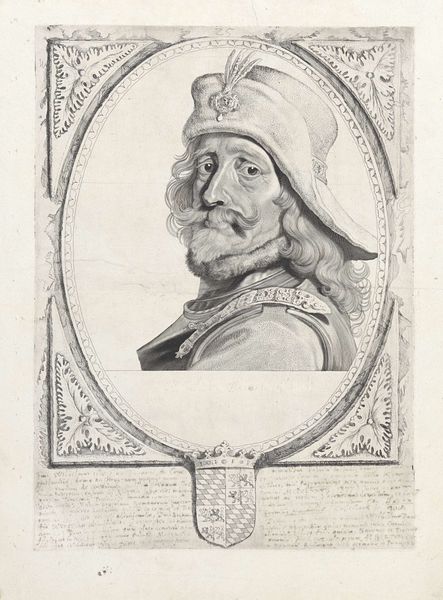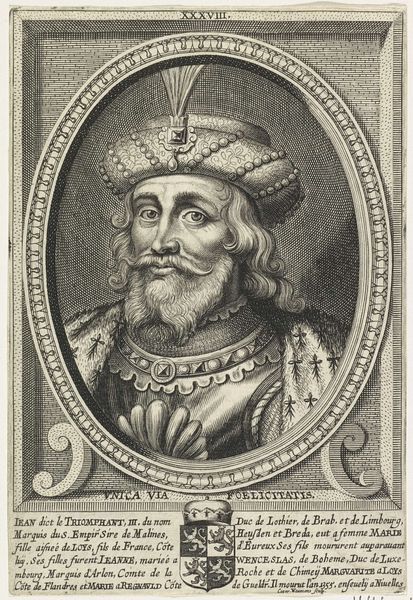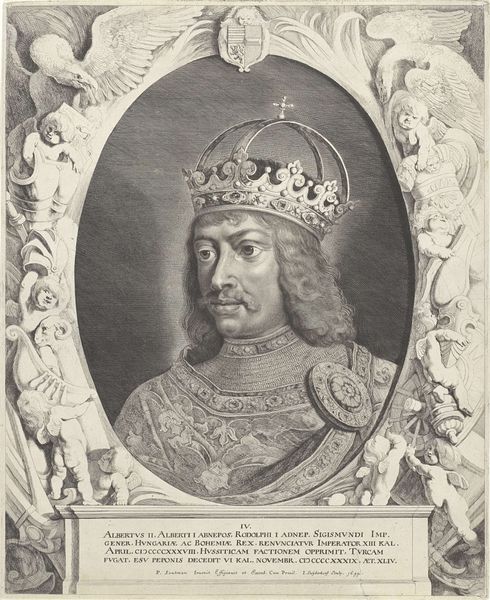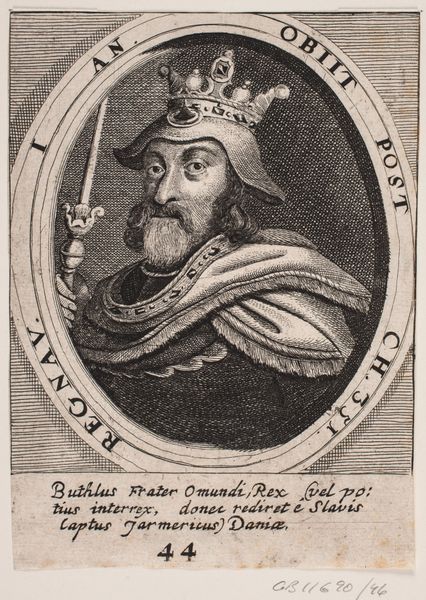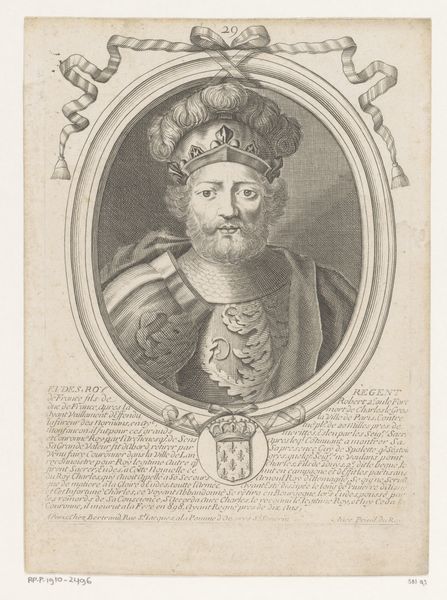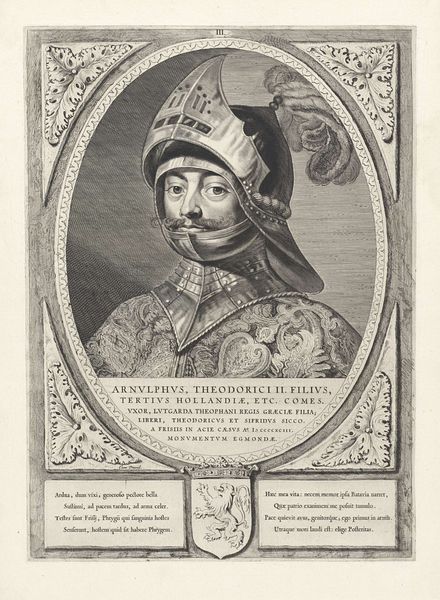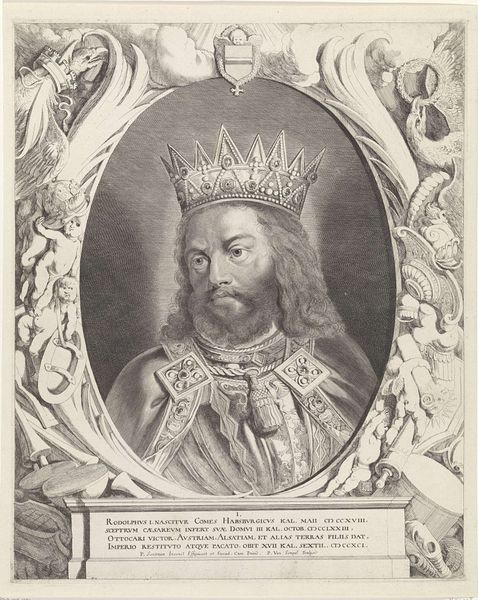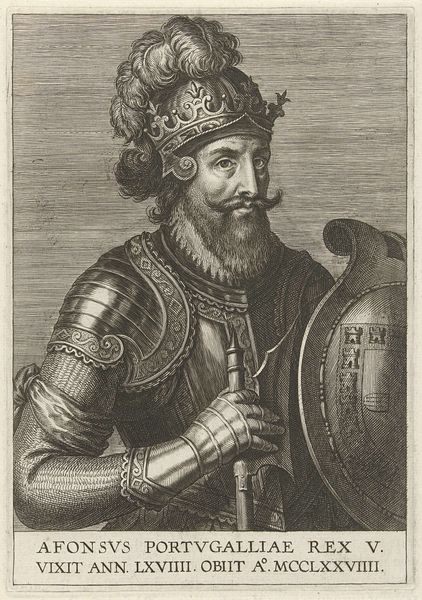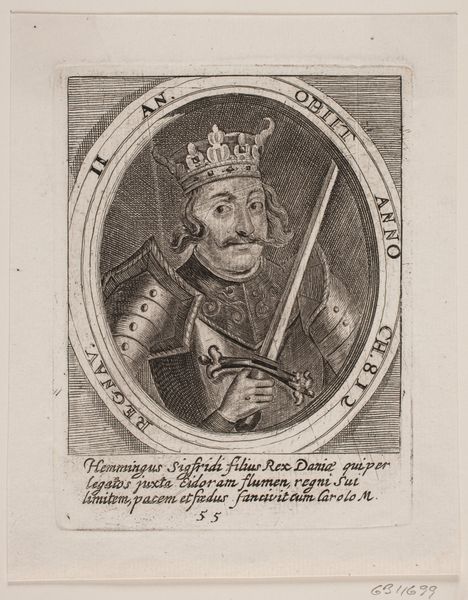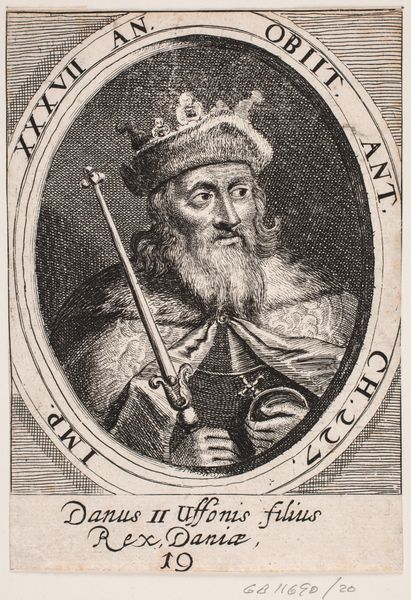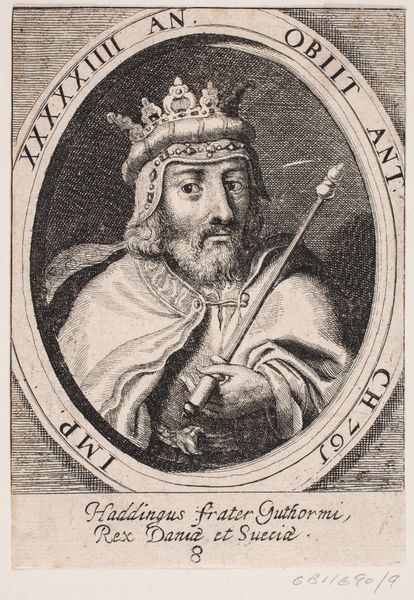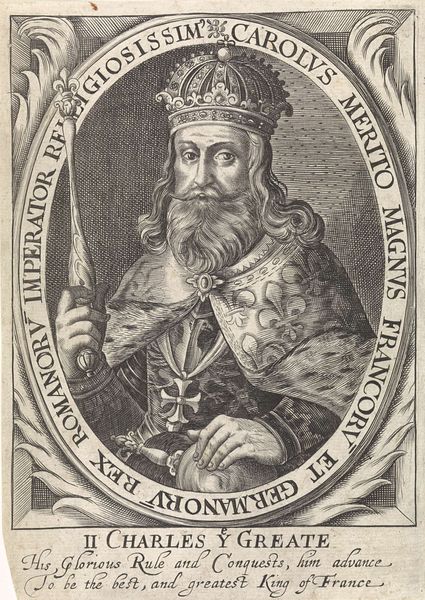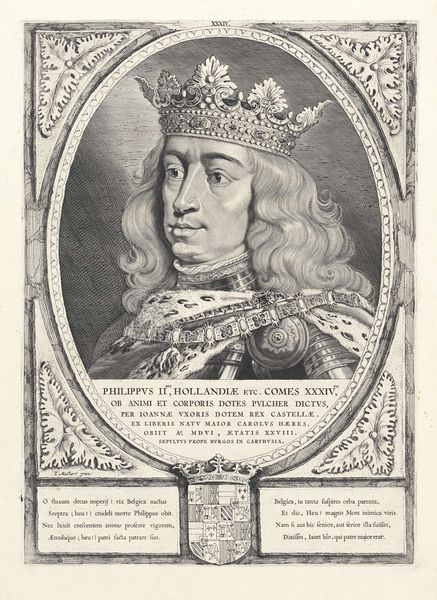
print, engraving
#
portrait
#
dutch-golden-age
# print
#
old engraving style
#
figuration
#
personal sketchbook
#
old-timey
#
history-painting
#
engraving
Dimensions: height 405 mm, width 293 mm
Copyright: Rijks Museum: Open Domain
This engraving of Willem II, Count of Holland, was made by Cornelis Visscher around the mid-17th century in the Netherlands. It offers insight into how power was visually constructed and disseminated in that era. Here, Willem II is depicted with the full regalia of a ruler, from his crown to his coat-of-arms, reinforcing his authority through established visual codes. The very act of creating and circulating such images speaks to the importance of image-making in solidifying a ruler's legitimacy. This portrait would have been commissioned, and the artist was carefully chosen to convey a specific message about the subject’s power. Understanding this work fully involves looking into Dutch history and the role of the Counts of Holland. We need to look at the political structures of the time, the role of patronage in the arts, and how images of rulers were used to maintain and project power. By doing so, we can appreciate the intricate ways in which art serves as a reflection of its time.
Comments
No comments
Be the first to comment and join the conversation on the ultimate creative platform.
